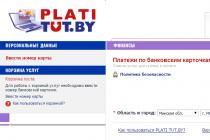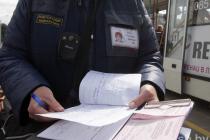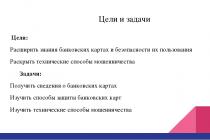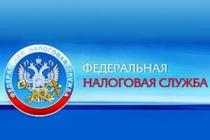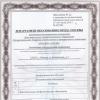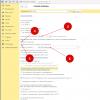Friedrich Wilhelm Raiffeisen was not a hero or a revolutionary, but there is practically no city or village in Austria where there is not a Raiffeisen Square or a street named after him. The bridge over the Rhine is named after him, the Raiffeisen Museum is located in the city of Weyerbusch, and, of course, his name is associated with the organization that he created to help people.
But that's today. And then, in the second half of the 19th century in Europe, during the period of reforms, the destruction of the old order, when competition became tougher, farmers were in dire need of funds for development. However, there was nowhere to expect support - there was no way to count on government help, and private lenders, due to high risks and administrative costs for small loans, asked for too high interest rates, ruinous for farms.
Friedrich Raiffeisen was very familiar with poverty. He was born on March 30, 1818 in the German province of Westphalia, in the small town of Hamm, into a poor family of a small farmer and was the seventh of nine children. The godfather, a priest, helped the boy receive his primary education, after which Friedrich was able to begin a military career. But early in 1842 he became seriously ill, causing his eyesight to deteriorate greatly. Raiffeisen left the military field and began working in the administration of the city of Koblenz. For his successful service, he was appointed mayor of the city of Weyerbusch and was finally able in 1845 to marry Emilie Storck, the daughter of a pharmacist from Remagen.
The population of Weyerbusch, like many other towns and villages in Central Europe, lived in poverty. Farmers and artisans lacked funds. All these problems were clear to Friedrich Raiffeisen. Of course, he was familiar with the utopian theories of improving the world, of which there were many, but these were only beautiful words. Suffering, grief and poverty affected people close to Raiffeisen, and he looked for a practical way to actually help them.
In 1847, Raiffeisen began using his small fortune and donations from wealthy people to create charitable lending societies to help his poor compatriots. But it was obvious that the success of an organization whose purpose was to help its members could not depend on charitable donations. Such an organization should be based on the principle of mutual assistance of those for whom it is created, Raiffeisen believed. With this idea, the creation of the first agricultural cooperative began. Those who needed funds should not have relied on private donations and social assistance from the state, but sought to help themselves and their loved ones themselves by creating unions and cooperatives that would give them the opportunity to sell their products on more favorable terms and thus withstand competition . The first Raiffeisen cooperative credit union was founded in 1846. Credit unions, which provided a range of banking services to their members, helped people pool their savings in order to make loans to members on reasonable terms.
In 1872, to reduce financial risks and exchange information, Raiffeisen united unions at the regional level into a regional cooperative credit union, and in 1877 opened a central office. The symbol of the Raiffeisen organization was two crossed horse heads. This sign, according to ancient custom, was attached to the gables of the roofs and protected the inhabitants from all harm.
By the time of Raiffeisen's death in 1888, there were 425 societies he created in Germany and about 120 in Austria.
The system also developed during the 20th century. The Raiffeisen Group was created with the parent institution Raiffeisen Zentralbank Oesterreich. In the 80s of the 20th century, the Raiffeisen group began to open subsidiary banks in the countries of Central and Eastern Europe and is currently one of the leading financial groups in the region. Raiffeisenbank has been operating in Russia since 1996.
Friedrich Raiffeisen himself could hardly have imagined that his modest beginnings would acquire such a scale. He simply could not remain indifferent to the suffering of the people around him. And not everyone knows that the man who during his lifetime was called “Father Raiffeisen” experienced many personal tragedies: first the death of two children, and then his beloved wife in 1863. At the age of 47, he was practically blind, but with the help of his daughter Amalia, who became his personal secretary, he continued to monitor the work of the organizations he created.
On March 11, 1888, Friedrich Wilhelm Raiffeisen died and was buried in the cemetery in the city of Geddesdorf.
Raiffeisen Zentralbank (RZB) is the third largest bank in Austria and one of the leading commercial and investment banks in the country. In addition to Austria, the bank has a strong presence in Central and Eastern Europe, serving approximately 15 million customers through more than 3,150 branches. RZB is the flagship of the Raiffeisen Banking Group (RBG). RBG's total assets as of December 31, 2009 were €260.3 billion.
Structure of Raiffeisen Banking Group in Austria
The 3-tier Raiffeisen cooperative banking group consists of RZB - the central organization for 8 autonomous regional banks (called Raiffeisenlandesbanks), which are shareholders of RZB, and 535 local banks (called Raiffeisenbanks), which are owned by 8 regional banks. The first Raiffeisenbank was created in 1886, and after just 10 years there were more than 600 of them. Beginning in 1894, local Raiffeisen banks began to form regional Raiffeisen banks (Raiffeisenlandesbanks) and in 1927 the Raiffeisen Zentralbank (RZB) was established.
Raiffeisen Zentralbank address:
Am Stadtpark 9, A-1030 Vienna
Tel: +43-1-71707-0
Website: http://www.rzb.at
Raiffeisenbank in Russia
ZAO Raiffeisenbank is a 100% subsidiary bank of the Austrian banking group Raiffeisen. The bank has been operating in Russia since 1996 and provides a full range of services to private and corporate clients, including consumer and mortgage loans, car loans, credit cards, bank deposits, deposits, lending to small and medium-sized businesses, cash management services, salary transfer services, treasury services. Today, Raiffeisen is represented in 75 cities, from Kaliningrad to Kamchatka, and has the largest service network among foreign banks in Russia, which includes more than 250 branches and over 1,000 ATMs.
Raiffeisen Bank International AG is the main bank of the Raiffeisen Group, which offers corporate and investment banking services to Austrian and international companies, individuals and legal entities.
Owners
Raiffeisen Bank International is a fully consolidated subsidiary of Raiffeisen Zentralbank (Raiffeisen Centralbank), as of 2014, owning about 60.7% of ordinary shares listed on the Vienna Stock Exchange, the rest of the shares are in free float.
Assets
As of 2018, RBI operates a network of subsidiary banks, leasing and other companies in 14 countries of Central and Eastern Europe such as Poland, Croatia, Bulgaria, the Czech Republic, etc., as well as in Asian countries and in the main financial centers of the world.
Number of employees

The decrease in headcount in 2018 was mainly due to the sale of business in Poland (-3,675 employees). The number of employees in Russia increased by 769 people over the year.
The average age of employees at RBI is 39 years. 66% of employees are women.

Performance indicators
As of January 2015, at the end of 2015, the entire RBI group (operating in most European countries, the USA and Asian countries), despite the positive results of the Russian division, expects losses of up to €500 million. Investors' concerns about possible losses are reflected in the value of valuable group papers. RBI's €500 million subordinated bonds with a coupon of 4.5% and maturing in 2025 were trading at 44% of par on January 29, 2015. Credit default swaps on them are trading at levels indicating that investors estimate the likelihood of an RBI default within five years to be 70%. RBI shares traded on the Vienna Stock Exchange halved their value in 2014 - from €24.42 to €12.53; at the close of trading on January 28, 2015, the shares cost only €9. Capitalization on the Vienna Stock Exchange was €2.988 billion on January 29.
Business in Russia
Story
2014: 14.6 million clients, 2900 branches
Raiffeisen Bank International AG is a corporate and investment bank in the financial markets of Austria and Central and Eastern Europe. In Central and Eastern Europe, Raiffeisen Bank International operates a network of subsidiary banks, leasing companies and a range of other specialized financial services providers in 15 markets.
Raiffeisen Bank International is an Austrian bank operating in global financial centers and in the Asian market. The bank's more than 56,000 employees serve 14.6 million customers in more than 2,900 branches, most of which are located in Central and Eastern Europe.
2011: Raiffeisen Zentralbank owns 78.5% of the bank's shares
As of 2011, Raiffeisen Bank International is a subsidiary of Raiffeisen Centralbank Austria AG (RZB), which owns about 78.5% of ordinary shares listed on the Vienna Stock Exchange, the rest of the shares are in free circulation.
Raiffeisen Bank International AG views Austria, where it acts as a leading corporate and investment bank, and Central and Eastern Europe as its main markets. In Central and Eastern Europe, Raiffeisen Bank International operates an extensive network of subsidiary banks, leasing companies and a wide range of other specialized financial service providers in 17 markets. The Bank's more than 59,000 employees serve approximately 15 million customers in its 3,000 branches, most of which are located in Central and Eastern Europe. Raiffeisen Bank International is the only Austrian bank operating in both global financial centers and the Asian market, which is its next focus.
»According to Moody's international scale, Raiffeisenbank was assigned a Ba2 stable rating. A sustainable financial organization occupies 14th place in the Russian Federation in terms of net assets and 7th place in terms of net profit.
A reputable organization's counterparties are trustworthy. Russian banks that are partners of Raiffeisenbank have achieved no less outstanding results and, in addition, are loyal to the clients of a representative of a serious holding company from Austria. Partner units are ready to provide services to Raiffeisenbank cardholders 24 hours a day.
Number of devices
The country is expanding the list of places where you can pay cashless. But the need for cash bills is still great: to pay for a taxi fare, to tip the service staff, to buy Forbes magazine at the Rospechat kiosk.
The CFU under consideration offers users to use a network of their own devices for transactions with physical means of payment, a total of 2000 units of equipment. In addition, there are 16 thousand ATMs and terminals that provide services at home rates. Replenishment is available in 7.5 thousand modules.
Card holders are also serviced without commission by partner banks of Raiffeisenbank.
In Russian cities, including the capital of the Southern Urals, Chelyabinsk, users of the RFB banking plastic card can freely find equipment from eight participating banks for depositing/withdrawing cash.
Exchange dollar for Russian currency
Let's consider a situation where it is not possible to top up the card with rubles. The wallet contains only dollars and euros. You can deposit dollars or euros into plastic only in Raiffeisenbank units.
The operation of depositing cash currency through the banking module is more profitable in terms of conversion than exchanging at the cash desk. Although there is an even more profitable method of exchange - through online banking. All rates are listed on the website of the bank in question. For example, on November 2, the dollar exchange for is as follows:
- Internet Bank 1: 56.85;
- ATM 1: 56.65;
- Branch 1 cash desk: 56.40.
The calculator can summarize the results as percentages. Conversion through the banking module is 0.443% more profitable than transactions through the cash register. So, exchanging 1 thousand dollars through the device will give an additional 443 rubles compared to the transaction through the cash register.

Magnificent Eight
Clients using those received from Raiffeisenbank can make ruble transactions in the affiliate network of the analyzed financial institution without additional costs. The register includes eight banks, according to information from the official website as of October 29, 2017, that allow you to withdraw money without commission. Two banks from the list allow replenishment of plastic cards for consumers of RFB services.
Name of KFU partner | Transactions without commission |
||
Top up |
|||
"Gazprombank" | |||
"Credit Bank of Moscow" | |||
"Rosselkhozbank" | |||
"UniCredit Bank" | |||
"BinBank" | |||
"Rosbank" | |||
Bank "URALSIB" | |||
"Energotransbank" | |||
The offices of the institutions "Binbank" and "Moscow Credit Bank" accept only Russian money from Raiffeisenbank clients and no more than 45 (forty-five) thousand rubles per transaction.
Raiffeisenbank issues 6 types of ruble loan cards and 15 types of debit cards, five of which allow transfers not only with Russian currency, but also with the dollar and the euro. But, we repeat that you can only work with currency in Raiffeisenbank machines.
The requested amount for cash withdrawal differs from the amount of funds to deposit.
Depending on the denomination of banknotes, ATM transaction limits may vary. Before making an investment or withdrawal of paper money, you can find out the balance of your card account for free in the units of partner banks.

The result depends on the denomination
ATMs are set to the number of banknotes. The technically possible maximum circulation volume of banknotes in the machine is 30 banknotes.
If the denomination of the money sheet is five thousand, then you can withdraw 150 thousand in one operation. A loaded unit will allow you to withdraw five times less at a time - only 30 thousand. The smaller the denomination of banknotes in the dispenser of the machine, the smaller the amount of money withdrawn.
Cashing and topping up in the city of white nights
In the city of St. Petersburg, 58 Raiffeisenbank units were recorded for withdrawing and depositing cash.
In addition, partner banks of Raiffeisenbank in St. Petersburg help RFB users get cash or top up their cards at the institutions:
- "Binbank";
- "Gazprombank";
- "Credit Bank of Moscow";
- "Rosbank";
- "Rosselkhozbank";
- "Uralsib";
- "Energotransbank";
- "UniCredit Bank".
The number of devices for receiving and issuing money in St. Petersburg varies among banks. Banks from the top twenty ratings are well represented in the city by the number of offices, ATMs and terminals.
In the only St. Petersburg branch of Energotransbank, an ATM has been installed to accept cash from partner clients.
"Moscow Credit Bank" currently has the only unit that accepts money in the city of St. Petersburg on Pulkovskoe Highway in the premises of the Avtodom car dealership. This information can be found on the financial institution’s website. MKB clients, if necessary, withdraw money from the modules of all partners, including through Raiffeisenbank devices, and deposit banknotes through the Alfa Bank unit.

How to identify a partner
The chain of mutual favors was confirmed and closed in a ring. This gives hope for the trouble-free use of plastic by both Raiffeisenbank and its partners.
Consumers of the services of partner banks can, if necessary, use Raiffeisenbank modules for depositing/withdrawing cash.
Each financial institution has developed a recognizable logo. It is useful for the reader-counterparty of the bank to know the “picture” of the institution in order to easily find the required machine.
Usually on the device body the bank logo is located on both sides and on the front side. In addition, information about the KFU website and emergency phone number is printed on the sides.
In RFB branches, near the ATMs, there is an information stand with the addresses of terminals and ATMs of partner banks.

Emergency banking assistance
The hotline provides advice to plastic holders in difficult and unusual situations. The client should conduct the conversation patiently and calmly, as most hotlines are robotic. Talking to a live operator is a rarity. Therefore, proposals and wishes should be presented clearly and concisely.
If you have any questions about working with ATMs without commission from Raiffeisenbank partner banks, the hotline will definitely help.

Incomplete namesake
Ukrainian Raiffeisenbank Aval is part of the International AG holding. The large bank has gained a high reputation in the market, consumers trust KFU, whose shareholders are RB with a share of 68.3% and with a capital ownership of 30%.
The political events of 2014 led to the closure of Aval branches in Russia, including the Republic of Crimea.
As of the date of writing this article, there are no partnerships between the Russian RFB and the Ukrainian Raiffeisenbank Aval. Clients of these banks will not be able to quickly use the units of their respective institutions either to withdraw or receive cash. Information received by calling the hotline.

Trust percentage
Depositing and withdrawing cash from a plastic card is carried out without commission.
To understand how convenient it is to have constant companions when conducting cash transactions, you should familiarize yourself with the percentages of payments when interacting with a “foreign” bank or “foreign” card, for example, a transfer.
Transfer from your own card to plastic from “other” banks:
- from debit - 1.5% of the transfer amount, but a minimum of 50 Russian rubles, 3 American dollars or 3 euros;
- with credit - 3% of the sending amount + 300 Russian rubles.
Transfer within Raiffeisenbank to cards of other clients:
- from debit - no commission;
Transfer from plastic cards of “foreign” banks to your own RFB card.
No commission, but a transfer fee may be charged by the issuing bank of the item being written off. For example, if you transfer money from a “foreign” Sberbank debit card to the RFB credit card, then Sberbank will write off 0.3% for the service, and Raiffeisen will not take a penny.
Transferring money between Raiffeisenbank's own cards:
- from debit - no commission;
- with credit - 3% of the transfer amount plus 300 Russian rubles.
Participating banks work in a similar way. Transactions with cash do not impose burdens on the Raiffeisenbank client, regardless of whether the counterparty puts money on the card at an RFB ATM or deposits it through the units of partner banks. Only non-cash transfers are subject to interest deductions.
Raiffeisen Bank International AG is one of the world's 200 largest banks and is the third bank in Austria in terms of assets. As of June 2017, the bank, whose total assets exceed 138 billion euros, owns 6.5% of the market in Austria. Other figures are no less impressive: almost 50 thousand employees, over 16.5 million clients and 2,400 branches.
The bank is named after the German reformer Friedrich Wilhelm Raiffeisen, the creator of the idea of cooperative mutual assistance and the founder of the first cooperative credit bank. It was on his ideas that the activities of the Genossenschaftliche Zentralbank were based, which was later renamed Raiffeisen in memory of its ideological inspirer.
Milestones of history
1886 The first branches of the future bank are opened in the Austrian Empire: in Mühldorf (Lower Austria) and Rosswein (currently Razvanje, Slovenia). The organization operates on the basis of cooperative mutual assistance, its participants are farmers, artisans, workers and businessmen.
1898 An association of agricultural cooperatives Allgemeiner Verband landwirtschaftlicher Genossenschaften is created, which in the future will become the basis for a single bank. By 1918, the number of cooperatives exceeded 2,000.
1927 The Central Cooperative Bank of Austria (Girozentrale der österreichischen Genossenschaften) was founded, which included most of the agricultural cooperatives.
1938 After the Anschluss of Austria to Nazi Germany, the banking group was nationalized. The bank is renamed Genossenschaftliche Zentralbank (abbreviated GZB).
1955 The bank is returned to its former owners.
1961 The organization is actively expanding. Specialized divisions of the bank are created, including the construction company Raiffeisen Bausparkasse. The bank is actively expanding its presence in major cities and opening its first branch in Vienna.
1986 The bank enters the markets of Central and Eastern Europe. From 1987 to 2001 a subsidiary of Raiffeisen Bank International opens branches in Bosnia and Herzegovina, Hungary, Slovakia, the Czech Republic, Bulgaria, Croatia, Ukraine, Romania, and Serbia. In 1996, the Russian subsidiary Raiffeisenbank opened.
1987 In honor of Friedrich Raiffeisen, the bank is named Raiffeisen Bankengruppe (RBG).
2005 The bank is reformed into a centralized structure and enters the Vienna Stock Exchange.
2010 Merger of Raiffeisen International and the central bank of the group Raiffeisen Zentralbank Österreich AG.
Founded as a cooperative bank, Raiffeisen Bankengruppe continues to have a leading position in the field: it ranks first among 485 banks in Austria and has a market share of more than 20%.
 Among the world's banks, Raiffeisen Bank ranks 149th in terms of capital and 135th in terms of total assets
Among the world's banks, Raiffeisen Bank ranks 149th in terms of capital and 135th in terms of total assets Structure of Raiffeisen Banking Group
1.7 million shareholders of the cooperative fund
8 regional banking subsidiaries
Raiffeisen Bank International
Financial institutions/insurance companies
Other participants
Kathrein Privatbank
Notartreuhandbank
Raiffeisen Bausparkasse
Raiffeisen Centrobank
Raiffeisen Factor Bank
Raiffeisen-Leasing
Raiffeisen Wohnbaubank
Abroad:
14 branches in Central
and Eastern Europe:
Raiffeisen Bank Sh.A., Albania
Raiffeisen Bank d.d., Bosnia and Herzegovina
Raiffeisen Bank EAD, Bulgaria
Raiffeisen Bank Zrt, Hungary
Raiffeisen Bank J.S.C., Kosovo
Raiffeisenbank d.d., Croatia
Raiffeisen Polbank, Poland
Raiffeisen Bank S.A., Romania
JSC Raiffeisenbank, Russia
Raiffeisen banka a.d., Serbia
Raiffeisenbank a.s., Czech Republic
Raiffeisen Bank Aval JSC, Ukraine
Priorbank JSC, Belarus
Tatra banka a.s., Slovakia
Raiffeisen-Leasing International:
Leasing companies
Investment companies
Non-state pension funds
Leipnik-Lundenburger Invest
Raiffeisen Informatik
Raiffeisen Property International
RSC Raiffeisen Service Center
Raiffeisen Verbundunternehmen-IT-ZHS
Abroad:
Centralized International Payments and Services Service, Romania
International processing center, Slovakia
Ukrainian processing center, Ukraine
 According to Raiffeisen reporting, more than 57% of the bank's assets are in Eastern Europe and Russia
According to Raiffeisen reporting, more than 57% of the bank's assets are in Eastern Europe and Russia Bank services
The quality of RBI's service has been confirmed by numerous awards. In 2016, the bank took high positions in the ratings of leading professional publications:
- The Banker (best bank in Central and Eastern Europe);
- Euromoney (Bank of the Year in Central and Eastern Europe);
- Global Finance (best investment bank in Austria);
- EMEA Finance (best bank in Austria).
Raiffeisen Bank offers a wide range of services:
- financing (project and structured finance, debt capital markets, factoring);
- leasing;
- investments (in precious metals, securities, money market);
- hedging (hedging currency risks, interest rates and other market factors);
- trade and export finance;
- investment banking services (asset-based financing, loan syndication, MA transactions);
- corporate settlements and liquidity management;
- brokerage services for working with funds and securities;
- issuance and servicing of payment and consumer cards;
- Internet banking.
Ratings
- in 1279th place in terms of sales ($6.8 billion);
- in 1169th position in terms of net profit ($513 million);
- in 243rd position in terms of assets ($118 billion);
- in 1571st position by market value ($7.3 billion).
In the rating of Russian banks, Raiffeisenbank JSC occupies 14th place. In terms of the volume of deposits from individuals, the bank is in 10th place, and in terms of the volume of loans – in 11th place among financial organizations in Russia.


Raiffeisen Bank International: basic data
Official name: Raiffeisen Bank International.
Head of the company: Karl Sevelda (Chairman of the Board).
Shareholding: Raiffeisen Zentralbank (58.8%), private shareholders (41.2%), shares traded on the Vienna Stock Exchange.
Annual revenue: €4.5 billion.
Capitalization: €8.6 billion.
Staff: 48,556 people.
Secrecy: double taxation agreement, AML (anti-money laundering), participation in OECD, FATF, Basel Committee, Egmont Group, etc.
Phone: + 43 1 717 070.
Head office address: Am Stadtpark 9, 1030, Vienna.
Conclusion
Raiffeisen Bank International will be an excellent option for non-residents who need to open a bank account in Austria. To open an account, a private individual will need a Russian passport. To open a corporate account, you also need a standard set of corporate documents and information on all major shareholders.
Raiffeisen Bank International is rightfully considered one of the largest and most stable banks in Austria. Perhaps you have already worked with this financial institution as an individual or corporate client? Share your opinion in the comments!

